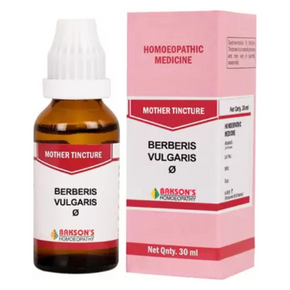- No products in the cart.
BAKSON'S HOMEOPATHY MENSO AID SYRUP
No reviews
Rs. 360.00
🥳 Don’t Miss 🎉 New Year Discounts till 9th Jan 2026 🤩
Fulfilled By Planet Ayurveda
Size (Per Unit): 115 ML / 450 ML
Dosage: Check Below
Categories
- Clinically Tested Products
- Classical Ayurvedic Products
- Ayurvedic Products for Pets
- Herbal Combo Packs
- Single Herbal Capsules
- Poly Herbal Capsules
- Single Herb Powders
- Herbal Powder Blends
- Beauty & Cosmetics
- Herbal Tablets
- Herbal Teas
- Herbal Juices
- Herbal Syrups
- Herbal Oils
- Premium Products Range
- All Ayurveda Brands
Browse by Category
Browse by Company
Browse by Health Concern
Description
Bakson's Menso Aid Syrup is a syrup for abdominal cramps, relieving back pain, and mild vaginal infections. It aids in comforting and relaxing the muscles during mensuration. The natural ingredients in the formulation assist in relieving general weakness and prevent genital tract infections.
Bakson's Menso Aid Syrup is a menstrual cramp remedy formulated to help women with issues related to changes in their monthly cycle. It is clinically formulated after thorough research to treat problems like period regulation, stomach pain, abnormal vaginal discharge, low sex drive, and other related issues in women's reproductive health. It also helps with general weakness and infections in the genital area.
Composition
Abroma augusta Ø, Abroma radix Ø, Aletris farinosa Ø, Alfalfa Ø, Terminalia arjuna Ø, Berberis vulgaris Ø, Cinchona officinalis Ø, Crataegus oxyacantha Ø, Janosia ashoka Ø, Pulsatilla nigricans 3x, Viburnum prunifolium Ø, Kali. bromatum 1x, Caulophyllum thalictroides Ø.
Indications
Bakson's Menso Aid Syrup is a syrup for period cramps. It is used for addressing irregular menstrual cycles accompanied by stomach cramps, lower back pain, and minor vaginal infections.
Dosage
Bakson's Menso Aid Syrup is a menstrual cycle support medication and its dosage is as follows:
- Take 1-2 teaspoons mixed with water twice daily or as directed by your doctor.
Contra-indication
Do not use during pregnancy or if pregnancy is suspected.
Side effects
Bakson's Menso Aid Syrup is a syrup for period cramps and since it has natural ingredients it has no known side effects.
More Information
A healthy female reproductive system is essential for women's overall health and well-being. It is responsible for producing hormones that regulate the menstrual cycle, ovulation, and pregnancy. The female reproductive system also plays a role in sexual function and pleasure.
The main components of the female reproductive system include
- Ovaries: The ovaries produce eggs and hormones, including estrogen and progesterone.
- Fallopian tubes: The fallopian tubes transport eggs from the ovaries to the uterus.
- Uterus: The uterus is a muscular organ that nourishes and protects a growing fetus.
- Cervix: The cervix is the opening at the bottom of the uterus. It leads into the vagina.
- Vagina: The vagina is a muscular tube that connects the uterus to the outside world.
Causes of irregular periods
Irregular periods are any changes in the normal menstrual cycle. This can include changes in the length of the cycle, the amount of bleeding, or the timing of ovulation.
There are many possible causes of irregular periods, including
- Hormonal changes: Hormonal changes can be caused by a variety of factors, including stress, weight gain, weight loss, and certain medical conditions, such as polycystic ovary syndrome (PCOS) and thyroid problems.
- Birth control: Some types of birth control can cause irregular periods, such as the pill and the intrauterine device (IUD).
- Medications: Certain medications can also cause irregular periods, such as antidepressants, antipsychotics, and chemotherapy drugs.
- Medical conditions: Some medical conditions, such as endometriosis and pelvic inflammatory disease (PID), can also cause irregular periods.
- Eating disorders: Eating disorders, such as anorexia nervosa and bulimia nervosa, can also cause irregular periods.
- Perimenopause: Perimenopause is the transition to menopause. It can start in a woman's 40s and last for several years. During perimenopause, it is common to have irregular periods.
Painful menstrual periods can also be the result of an underlying medical condition, such as
- Premenstrual syndrome (PMS).
- Endometriosis. This is a painful medical condition in which cells from the lining of the uterus grow in other parts of the body, usually on the fallopian tubes, ovaries, or tissue lining the pelvis.
- Fibroids in the uterus.
- Pelvic inflammatory disease (PID). PID is an infection of the uterus, fallopian tubes, or ovaries often caused by sexually transmitted bacteria.
Action of each ingredient is
Abroma augusta
- Origin: Abroma augusta is derived from the plant known as Devil's Cotton, native to Southeast Asia.
- Mechanism of Action: Abroma augusta is effective for addressing irregular menses, especially when blood is dark and clotted. It also helps with painful menstruation and profuse, colicky leucorrhea. The remedy's mechanism involves regulating and normalizing the menstrual cycle and reducing clot formation. It works by stimulating uterine contractions and relaxing the cervix. This can be helpful for women who have delayed or prolonged menstruation, or who experience painful menstrual cramps. It has anti-inflammatory and antibacterial properties which aids in relieving menstrual pain.
Abroma radix
- Origin: Abroma radix is derived from the same plant as Abroma augusta.
- Mechanism of Action: Abroma radix is indicated for painful and irregular menses, along with heavy white discharge (leucorrhea). Its mechanism of action involves reducing pain and discomfort during menstruation and addressing abnormal vaginal discharge. It works by stimulating uterine contractions and relaxing the cervix. It is also thought to have anti-inflammatory and antibacterial properties.
Aletris farinosa (Colic Root)
- Origin: Aletris farinosa is a herb native to North America.
- Mechanism of Action: Aletris farinosa is indicated for uterine pain, menses occurring too soon and profuse with labor-like pain. It may help by reducing pain and regulating the timing and flow of menstruation.
Alfalfa (Medicago sativa)
- Origin: Alfalfa is a plant native to southwestern Asia.
- Mechanism of Action: Alfalfa is recommended for painful menses and weakness of the whole body. While it does not directly address menstrual pain, it can improve overall vitality, which may indirectly help alleviate discomfort during menstruation. It works by balancing hormones and reducing inflammation in the uterus and ovaries. It is also a good source of vitamins and minerals, which can be beneficial for women who experience menstrual-related problems. Alfalfa is commonly used to treat a variety of menstrual-related problems, including irregular periods, heavy menstrual bleeding, and menstrual cramps.
Terminalia arjuna (Arjuna)
- Origin: Terminalia arjuna is a tree native to India.
- Mechanism of Action: Terminalia arjuna helps relieve weakness and nervousness. It also regulates menstrual flow and addresses abnormal vaginal discharges resulting from sexually transmitted diseases. Its mechanism involves enhancing overall health and supporting the immune system.
Berberis vulgaris (Barberry)
- Origin: Berberis vulgaris is a plant native to Europe, Asia, and North America.
- Mechanism of Action: Berberis vulgaris is indicated for vaginal contraction and tenderness, scanty menses, and grayish mucus leucorrhea with painful urinary symptoms. It can alleviate neuralgia of the ovaries and may help in normalizing menstruation. It works by reducing inflammation and pain in the uterus and ovaries. It may also help to regulate the menstrual cycle.
Caulophyllum thalictroides (Blue Cohosh)
- Origin: Caulophyllum thalictroides is a plant native to North America.
- Mechanism of Action: Caulophyllum thalictroides is effective for rigid cervical os with spasmodic and severe pain. It may help prevent habitual abortions caused by uterine debility and address profuse and painful menses. It works through a variety of mechanisms, including stimulating uterine contractions, relaxing the cervix, reducing inflammation, and balancing hormones. It may also have a general calming and relaxing effect on the body.
Cinchona officinalis (China or Peruvian Bark)
- Origin: Cinchona officinalis is a tree native to South America.
- Mechanism of Action: Cinchona officinalis is indicated for profuse menses with bloody vaginal secretion (leucorrhea). It may help when menses are too early, dark, and accompanied by abdominal distension.
Crataegus oxyacantha (Hawthorn)
- Origin: Crataegus oxyacantha is a shrub native to Europe, North Africa, and Western Asia.
- Mechanism of Action: Crataegus oxyacantha is indicated for dysmenorrhea (painful menstruation) with a weak, hard feeling and a sensation of giddiness. It may help in alleviating menstrual pain and related discomfort. It works by improving blood circulation to the uterus and ovaries. This can help to reduce inflammation and pain, and may also help to regulate the menstrual cycle. It also have a calming effect on the body, which can be helpful for women who experience anxiety or stress-related menstrual problems.
Janosia ashoka
- Origin: Janosia ashoka is a plant native to the Indian subcontinent.
- Mechanism of Action: Janosia ashoka is indicated for delayed or irregular menses. It can address issues where menstrual discharge is scanty, pale, watery, foul-smelling, and blackish. It works by balancing hormones and reducing inflammation in the uterus and ovaries. It may also help to improve mood and mental state.
Pulsatilla nigricans (Wind Flower)
- Origin: Pulsatilla nigricans is derived from the plant known as Pulsatilla, native to Europe.
- Mechanism of Action: Pulsatilla nigricans is indicated for suppressed menses, diarrhea during or after menses, and whitish, yellowish, or greenish creamy, acrid, and burning discharge from the vagina of females (leucorrhea). It helps regulate menstrual cycles and alleviate associated symptoms.
Viburnum prunifolium (Black Haw)
- Origin: Viburnum prunifolium is a shrub native to North America.
- Mechanism of Action: Viburnum prunifolium is effective for cases where menses are too late, scanty, and last only a few hours. It can also help with whitish, yellowish, vaginal discharge (leucorrhea), which may occur with genital itching.
Kali bromatum (Potassium Bromide)
- Origin: Kali bromatum is a chemical compound containing potassium and bromine.
- Mechanism of Action: Kali bromatum relieves ovarian neuralgia and accompanying nervous uneasiness. It helps in reducing pain and discomfort associated with ovarian neuralgia. It is commonly used to treat a variety of conditions, including menstrual cramps, premenstrual syndrome (PMS), and irregular periods.
- It works by stimulating the body's own healing mechanisms. It works by regulating the menstrual cycle by balancing hormones and reducing inflammation and pain. It may also improve mood and mental state, which can be helpful for women who experience PMS or other menstrual-related mood swings
Disclaimer
The information provided herein on request, is not to be taken as a replacement for medical advice or diagnosis or treatment of any medical condition. DO NOT SELF MEDICATE. PLEASE CONSULT YOUR PHYSICIAN FOR PROPER DIAGNOSIS AND PRESCRIPTION.
Talk to our Experts
Our trusted experts can help you choose the right products for your health.
Book Your Consultation Now



















.png?v=1695813493)






















